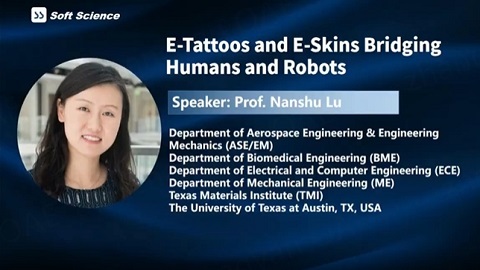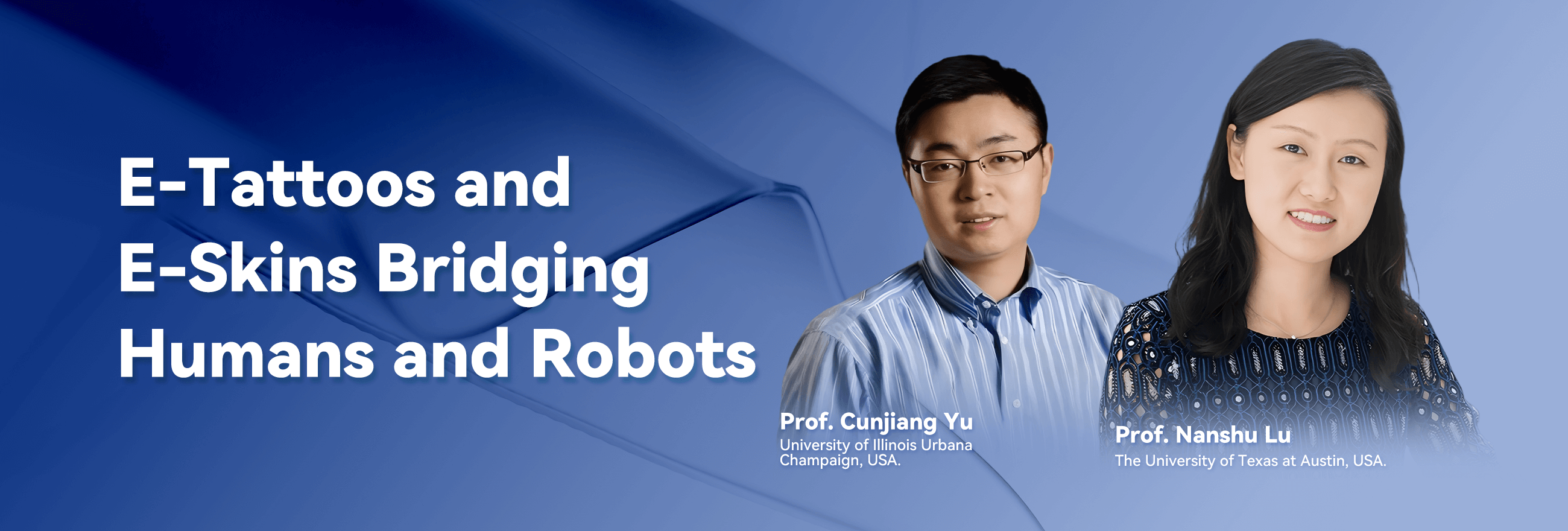Contents
Host

Prof. Cunjiang Yu
Materials Research Institute, Pennsylvania State University, University Park, PA, United States.
Dr. Cunjiang Yu is the Dorothy Quiggle Career Development Associate Professor of Engineering Science and Mechanics, Biomedical Engineering, and Materials Science and Engineering at Pennsylvania State University. His recent research concerns the fundamentals and applications of soft and curvy electronics.
Speaker

Prof. Nanshu Lu
Department of Aerospace Engineering & Engineering Mechanics
Department of Biomedical Engineering
Department of Electrical and Computer Engineering
Department of Mechanical Engineering
Texas Materials Institute
The University of Texas at Austin, TX, United States
Department of Biomedical Engineering
Department of Electrical and Computer Engineering
Department of Mechanical Engineering
Texas Materials Institute
The University of Texas at Austin, TX, United States
Dr. Nanshu Lu is the Frank and Kay Reese Professor at the University of Texas at Austin. She received her B.Eng. with honors from Tsinghua University, Beijing, her Ph.D. from Harvard University, and then Beckman Postdoctoral Fellowship at UIUC. Her research concerns the mechanics, materials, manufacture, and human / robot integration of soft electronics. She is a Clarivate (Web of Science) highly cited researcher and a Fellow of the American Society of Mechanical Engineers (ASME). She is on the Board of Directors of the Society of Engineering Science (SES). She is currently an Associate Editor of Nano Letters and Journal of Applied Mechanics. She has been named 35 innovators under 35 by MIT Technology Review (TR 35) and iCANX/ACS Nano Inaugural Rising Star. She has received US NSF CAREER Award, US ONR and AFOSR Young Investigator Awards, 3M non-tenured faculty award, and the ASME Thomas J.R. Hughes Young Investigator Award. She was selected as one of the five great innovators on campus and five world-changing women at the University of Texas at Austin. For more information, please visit Dr. Lu's research group webpage at https://sites.utexas.edu/nanshulu/ and follow her on Twitter: @nanshulu.
Abstract
Many of us share a vision for the future that humans will be more like robots (i.e., digital, computational, cyber, expandable, etc.) whereas robots will be more like humans (i.e., soft, dexterous, intelligent, energy efficient, etc.). My group therefore focuses on human and robot integration of soft electronics. This talk will introduce my research on stretchable electronics based on inorganic electronic materials such as metals, silicon, carbon nanotubes (CNT), and graphene. In particular, epidermal electronics, a.k.a. e-tattoos, represent a class of stretchable circuits, sensors, and stimulators that are ultrathin, ultrasoft, noninvasive but skin-conformable. My group has invented a dry and freeform “cut-and-paste” fabrication process for the rapid prototyping of multi-material, large-area, and wireless e-tattoos capable of high-fidelity and ambulatory biometric sensing. While e-tattoos are for human wear, e-skins are for robots to emulate the functionalities and properties of human skins. Soft e-skins with stretchable pressure sensors have long been desired, but contamination of pressure responses by stretching has been a persistant challenge. My group recently developed a stretchable hybrid response pressure sensor (SHRPS) that solves this problem. SHRPS-integrated inflatable probes can be used for either accurate, gentle digital palpation or large-area, firm gripping. With e-tattoos digitizing the human body and e-skins mimicking human skin, we aim to bridge the gap between humans and robots for a symbiotic future.
Presentation

Topic: Prof. Nanshu Lu-E-Tattoos and E-Skins Bridging Humans and Robots
NaN

Topic: Free Discussion
NaN











